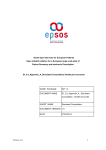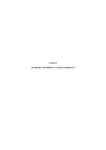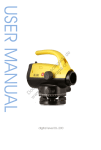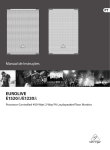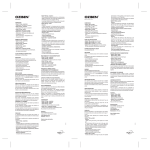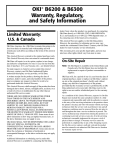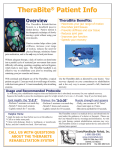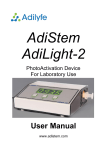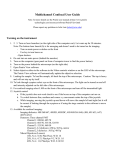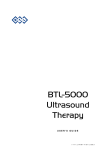Download Foscan, INN-temoporfin
Transcript
ANNEX I SUMMARY OF PRODUCT CHARACTERISTICS 1 1. NAME OF THE MEDICINAL PRODUCT Foscan 1 mg/ml solution for injection 2. QUALITATIVE AND QUANTITATIVE COMPOSITION Each ml contains 1 mg of temoporfin. Excipients Each ml contains 376 mg of ethanol anhydrous and 560 mg of propylene glycol. For a full list of excipients, see section 6.1 3. PHARMACEUTICAL FORM Solution for injection. Dark purple solution. 4. CLINICAL PARTICULARS 4.1 Therapeutic indications Foscan is indicated for the palliative treatment of patients with advanced head and neck squamous cell carcinoma failing prior therapies and unsuitable for radiotherapy, surgery or systemic chemotherapy. 4.2 Posology and method of administration Foscan photodynamic therapy must only be administered in specialist oncology centres in which a multidisciplinary team assesses patient treatment and under the supervision of physicians experienced in photodynamic therapy. Posology The dose is 0.15mg/kg body weight. Paediatric population There is no relevant use of Foscan in the paediatric population. Method of administration Foscan is administered via an in-dwelling intravenous cannula in a large proximal limb vein, preferably in the antecubital fossa, as a single slow intravenous injection over not less than 6 minutes. The patency of the in-dwelling cannula should be tested before injection and every precaution taken against extravasation (see section 4.4). The dark purple colour of the solution, together with the amber vials makes a visual check for particulates impossible. Thus, an in-line filter must be used as a precautionary measure and is provided in the package. Foscan shall not be diluted nor flushed with sodium chloride or any other aqueous solution. The required dose of Foscan is administered by slow intravenous injection, over not less than 6 minutes. 96 hours after the administration of Foscan, the treatment site is to be illuminated with light at 652 nm from an approved laser source. Light must be delivered to the entire surface of the tumour 2 using an approved microlens fibre-optic. Wherever possible, the illuminated area must extend beyond the tumour margin by a distance of 0.5cm. Light must be administered not less than 90 hours and not more than 110 hours after Foscan injection. The incident light dose is 20J/cm2, delivered at an irradiance of 100mW/cm2 to the tumour surface, implying an illumination time of approximately 200 seconds. Each field is to be illuminated once only at each treatment. Multiple non-overlapping fields may be illuminated. Care must be taken to ensure that no area of tissue receives more than the specified light dose. Tissue outside the target area must be shielded completely to avoid photoactivation by scattered or reflected light. A second course of treatment may be given at the discretion of the treating physician in patients where additional tumour necrosis and removal is deemed appropriate, with a recommended minimum interval of 4 weeks between treatments. 4.3 4.4 Contraindications Hypersensitivity to the active substance or to any of the excipients. Porphyria or other diseases exacerbated by light. Hypersensitivity to porphyrins. Tumours known to be eroding into a major blood vessel in or adjacent to the illumination site. A planned surgical procedure within the next 30 days. Co-existing ophthalmic disease likely to require slit-lamp examination within the next 30 days. Existing therapy with a photosensitizing agent. Special warnings and precautions for use Special care must be taken to prevent extravasation at the injection site. If extravasation occurs, protect the area from light for at least 3 months. There is no known benefit from injecting the extravasation site with another substance. Some pulse oximeters may produce light of a wavelength close to that used for the photoactivation of Foscan. Oximeters must be repositioned at least every 10-15 minutes to avoid the risk of local skin burns. For 6 months following Foscan treatment prolonged direct sunlight exposure of the injection site arm shall be avoided. As a precautionary measure, if prolonged outdoor activity is planned, the injection arm should be protected by wearing a long sleeved, coloured shirt. Unplanned or emergency surgical procedures where Foscan has been administered within the previous 30 days must be undertaken only if absolutely necessary and the potential benefits outweigh the risk to the patient. All precautions must be taken to avoid direct illumination of the patient with surgical lamps during these procedures. All patients who receive Foscan will become temporarily photosensitive. Precautions must be taken to avoid exposure of skin and eyes to direct sunlight or bright indoor light during the first 15 days after injection. Skin photosensitivity reactions are caused by visible light; therefore ultraviolet sunscreens provide no protection. It is important that patients are re-introduced to normal light gradually. Pain, other than injection site pain, listed in section 4.8 may require the use of NSAIDs or opiate analgesics for a short time following treatment. Clinicians must counsel patients to observe the following precautions that are provided in the Package Leaflet. 3 Time after Foscan Injection What should I do to prevent burns? Day 1 (0-24 hours) Stay indoors in a darkened room. Keep the curtains drawn and use light bulbs of 60W or less. Avoid exposure to direct sunlight. Days 2-7 You can gradually return to normal indoor lighting. Remember to avoid direct sunlight coming through the window or direct light from household appliances such as reading lamps. You may watch television. You can go outdoors after dusk. If it is absolutely necessary to go outdoors during the hours of daylight, you must be careful to cover up all your skin including your face and hands and wear dark glasses. The type of clothes you must wear are: Wide-brimmed hat: for head, neck, nose and ears. Scarf: for head and neck. Sunglasses with side panels: for eyes and skin around eyes. Long sleeved top: for upper body/arms. Long trousers: for lower body/legs. Gloves: for hands, wrist and fingers. Socks: for feet and ankles. Closed shoes: for feet. Do not wear very thin clothing because it will not protect you from strong light. Wear dark, closely woven clothing. If you expose yourself to light by mistake, you may get a prickly or burning feeling on the skin. You must get out of the light immediately. Your eyes may be very sensitive to bright lights during this week. You may get eye pain or headache when lights are switched on. If you have this problem, wear dark glasses. Days 8-14 You can now begin to go outside during daylight hours. Stay in shaded areas or go out when it is cloudy. Continue to wear dark, closely woven clothing. Start on Day 8 with 10-15 minutes outdoors. If you do not see any skin redness in the next 24 hours, you can gradually increase your time outdoors during the week. Avoid direct sunlight or strong indoor lighting. Stay in the shade. Day 15 onward Your sensitivity to light is gradually getting back to normal. You must test this carefully by exposing the back of your hand to the sun for 5 minutes. Wait 24 hours to see if there is any redness. If there is redness, you should avoid direct sunlight for another 24 hours. You can then repeat the test. If there is no redness, you can gradually increase your exposure to sunlight day by day. Do not stay in the sunlight for more than 15 minutes the first time. Most people will be able to go back to their normal routine by Day 22. On the first day after the skin test, you can stay in direct sunlight for 15 minutes. You can increase your exposure by another 15 minutes each day i.e. second day 30 minutes, third day 45 minutes, fourth day 60 minutes and so on. If at any time you notice a prickly or burning feeling or see skin reddening after exposure to sun, wait until this disappears before exposing your skin to light for this length of time again. For 30 days following Foscan treatment, avoid eye tests that use bright lights. 4 For 3 months following Foscan treatment, avoid UV tanning beds. Do not sunbathe. For 6 months following Foscan treatment, care should be taken to avoid direct prolonged sunlight exposure of the arm used for Foscan injection. As a precautionary measure, if prolonged outdoor activity is planned, the injection arm should be protected by wearing long sleeved, coloured clothing. This medicinal product contains 48 vol % ethanol (alcohol), i.e up to 4.2 g per dose, equivalent to 84 ml of beer, 35 ml wine per dose. Harmful for those suffering from alcoholism. To be taken into account in pregnant or breast-feeding women, children and high-risk groups such as patients with liver disease or epilepsy. The amount of alcohol in this medicinal product may alter the effects of other medicines. The amount of alcohol in this medicinal product may impair the ability to drive or use machines. 4.5 Interaction with other medicinal products and other forms of interaction There is potential for exacerbation of skin photosensitivity if temoporfin is used with other photosensitising active substances. Such a reaction has been reported with topical 5-fluorouracil. No other interactions have been observed. An in vitro study with human liver tissue has shown no potential for drug interaction through inhibition of cytochrome P-450 enzymes by temoporfin. 4.6 Fertility, pregnancy and lactation There are no data from the use of temoporfin in pregnant women. Animal studies are insufficient with respect to effects on embryonal/foetal development (see section 5.3). The potential risk for humans is unknown. Temoporfin should not be used during pregnancy unless clearly necessary. Animal studies suggest a toxic effect in early pregnancy (see section 5.3). The potential risk for humans is unknown. Therefore, pregnancy must be avoided for 3 months after treatment with temoporfin. It is not known if temoporfin is excreted in human milk. Women receiving Foscan must not breast feed for at least one month following injection. The effects of Foscan on fertility in humans have not been studied. 4.7 Effects on ability to drive and use machines The amount of alcohol in this medicinal product may impair the ability to drive or use machines. On the basis of the pharmacodynamic profile, temoporfin is presumed to be safe or unlikely to produce an effect. To avoid photosensitivity problems, it is advised not to drive during the first 15 days after injection, and to use machines only if it is practical to do so under subdued lighting conditions according to the recommended lighting precautions (see section 4.4). Driving and use of machines may resume under normal lighting or daylight conditions once photosensitivity has been shown to have subsided. 4.8 Undesirable effects Summary of the safety profile All patients who receive Foscan will become temporarily photosensitive and must be instructed to observe precautions to avoid sunlight and bright indoor light. Regarding the tabulated adverse reactions gastrointestinal disorders, adverse skin reactions and general disorders and administration site conditions are the most frequently observed adverse reactions. 5 Most toxicities associated with this therapy are local effects seen in the region of illumination and occasionally in surrounding tissues. The local adverse reactions are characteristic of an acute tissue inflammatory response induced by photoactivation. The low number of treated patients did not allow identification of adverse reactions, which may be categorised as uncommon and rare. Injection site pain is transient and can be reduced by slowing the injection rate. For treatment of other types of pain listed in this section, please see section 4.4. Tabulated summary of adverse reactions Frequencies are defined as: very common (≥1/10); common (≥1/100 to <1/10); uncommon (≥1/1,000 to <1/100); rare (≥1/10,000 to <1/1,000); very rare (<1/10,000), not known (cannot be estimated from the available data). Within each frequency grouping, undesirable effects are presented in order of decreasing seriousness. System Organ Class Undesirable effects Infections and infestations Common: localised infection Common: anaemia Common: dizziness, burning sensation Very common: haemorrhage Very common: constipation, stomatitis necrotising, dysphagia Common: vomiting, nausea, mouth ulceration Common: blister, erythema, skin hyperpigmentations, photosensitivity reaction, skin necrosis Common: trismus Very common: pain, injection site pain, facial pain, face oedema Common: pyrexia, injection site reaction, oedema Very common: scar Common: thermal burn, sunburn Blood and lymphatic system disorders Nervous system disorders Vascular disorders Gastrointestinal disorders Skin and subcutaneous tissue disorders Musculoskeletal, connective tissue and bone disorders General disorders and administration site conditions Injury, poisoning and procedural complications 4.9 Overdose In the event of an overdose, laser treatment would result in deeper tumour necrosis than would be expected with the recommended dose. Illumination of the tumour should only be carried out if the potential benefit justifies the potential risk of excessive necrosis. If the tumour is not illuminated, a period of at least 4 weeks between overdose and re-administration of Foscan must be allowed. The adverse reactions associated with overdose would be expected to be limited to photosensitivity reactions. Exposure to ambient light after overdose carries an increased risk of photosensitivity reactions. Published clinical research has shown that the duration and intensity of photosensitivity at the recommended dose of 0.15 mg/kg were reduced by one third relative to a dose of 0.3 mg/kg. Animal studies have shown some haematological and blood chemistry changes (decreased platelets, erythrocytes and haemoglobin, increased neutrophils, fibrinogen, bilirubin, triglyceride and cholesterol). 6 Strict observance of the reduced light regime is required. A skin photosensitivity test must be carried out before the patient returns to normal light conditions. No specific systemic symptoms are known to be associated with overdose. Treatment should be supportive. Limited information is available on the effects of overexposure to laser light during treatment. Increased damage to tissue was noted. 5. PHARMACOLOGICAL PROPERTIES 5.1 Pharmacodynamic properties Pharmacotherapeutic group: Antineoplastic agents, other antineoplastic agents, ATC code: L01XD05. Temoporfin is a photosensitising agent used in the photodynamic therapy of tumours. The pharmacological activity is initiated by photoactivation of temoporfin with non-thermal light at 652nm following intravenous administration. The therapeutic effect is mediated through the generation of highly reactive oxygen species, a process dependent on the intracellular interaction of temoporfin with light and oxygen. In a clinical trial of 147 patients with advanced head and neck squamous cell carcinoma, tumour response, defined as a reduction of a minimum of 50% of the tumour mass for a minimum of four weeks, was observed in 25% after a single treatment. A WHO local complete response was observed in 14% of patients. Tumour responses are enhanced in patients with fully illuminated lesions of 10mm or less in depth. The median observed duration of tumour response for all patients was 57 days for overall response and 84 days for complete response. Thirty-seven patients received at least 2 treatments with Foscan. Ten patients achieved a tumour response due to re-treatment. Of these, 6 had a complete local response according to WHO criteria. 5.2 Pharmacokinetic properties Temoporfin is a low clearance substance with a terminal plasma half-life of 65 hours in patients. Peak plasma levels occur at 2-4 hours post-injection thereafter plasma levels decline in a bi-exponential manner. An extensive volume of distribution is observed that is intermediate between total and extracellular body water. Temoporfin does not concentrate in the tissues. Plasma protein binding is at 85-87%. Temoporfin is bound to plasma lipoproteins and high density proteins such as albumin in the blood. By 15 days post-infusion, temoporfin plasma concentration has declined to background such that patients are generally able to begin a gradual return to normal outdoor lighting conditions. Limited data are available on the elimination of temoporfin in humans. Animal data show temoporfin is exclusively eliminated by the liver into the bile and excreted in the faeces. Two major metabolites of temoporfin are eliminated into the bile. There is no enterohepatic recirculation of these metabolites. Both these metabolites show conjugated character. No metabolites are seen in the systemic circulation. 7 5.3 Preclinical safety data In repeated dose toxicity studies in rats and dogs, the main undesirable effects of temoporfin were phototoxicity and adverse injection site reactions. Local irritancy of Foscan solution for injection after intravenous administration occurred with all doses. High rates of administration caused death in dogs and rabbits. No other signs of toxicity were found, however, in dogs treated with the recommended therapeutic dose, systemic exposure exceeded that of humans. The genotoxicity of temoporfin has been investigated to a limited extent. Due to the generation of reactive oxygen species, temoporfin poses a minor risk of mutagenicity. This risk can be controlled in the clinical situation by minimising direct exposure to light (see section 4.4). In developmental toxicity studies in rabbits, temoporfin, at systemic exposures equal to those obtained in humans with the recommended therapeutic dose, caused an increase in early post-implantation loss. Although no other developmental effects were observed, the applied doses were not sufficiently in excess of the human therapeutic dose to provide an adequate margin of safety. 6. 6.1 PHARMACEUTICAL PARTICULARS List of excipients Ethanol, anhydrous (E1510) Propylene glycol (E1520) 6.2 Incompatibilities In the absence of compatibility studies, this medicinal product must not be mixed with other medicinal products except those mentioned in section 6.6. 6.3 Shelf life 5 years. Once opened, the solution must be used immediately. 6.4 Special precautions for storage Do not store above 25oC. Store in the original package in order to protect from light. 6.5 Nature and contents of container Type I amber glass vials with a bromobutyl elastomer stopper and aluminium seal containing either 1 ml or 3 ml or 6 ml of solution for injection. Each pack contains 1 vial and a filter with Luer lock connections for syringe and cannula. Not all pack sizes may be marketed. 8 6.6 Special precautions for disposal and other handling Appropriate precaution must be taken when handling this medicinal product. Studies have shown that Foscan is non-irritant. Each vial represents a single dose and any unused solution must be discarded. Foscan is photosensitive. Once removed from its packaging it must be administered immediately. Where delay is unavoidable, the solution must be protected from light. Foscan shall not be diluted with aqueous solutions Any unused product or waste material should be disposed of in accordance with local requirements. 7. MARKETING AUTHORISATION HOLDER biolitec pharma ltd. United Drug House Magna Drive Dublin 24 Ireland 8. MARKETING AUTHORISATION NUMBER(S) EU/1/01/197/003 EU/1/01/197/004 EU/1/01/197/005 9. DATE OF FIRST AUTHORISATION/RENEWAL OF THE AUTHORISATION Date of first authorisation: 24 October 2001 Date of latest renewal: 10. DATE OF REVISION OF THE TEXT Detailed information on this medicinal product is available on the website of the European Medicines Agency: http://www.ema.europa.eu 9 1. NAME OF THE MEDICINAL PRODUCT Foscan 4 mg/ml solution for injection 2. QUALITATIVE AND QUANTITATIVE COMPOSITION Each ml contains 4 mg of temoporfin. Excipients Each ml contains 376 mg of ethanol anhydrous and 560 mg of propylene glycol. For a full list of excipients, see section 6.1 3. PHARMACEUTICAL FORM Solution for injection. Dark purple solution. 4. CLINICAL PARTICULARS 4.1 Therapeutic indications Foscan is indicated for the palliative treatment of patients with advanced head and neck squamous cell carcinoma failing prior therapies and unsuitable for radiotherapy, surgery or systemic chemotherapy. 4.2 Posology and method of administration Foscan photodynamic therapy must only be administered in specialist oncology centres in which a multidisciplinary team assesses patient treatment and under the supervision of physicians experienced in photodynamic therapy. Posology The dose is 0.15mg/kg body weight. Paediatric population There is no relevant use of Foscan in the paediatric population. Method of administration Foscan is administered via an in-dwelling intravenous cannula in a large proximal limb vein, preferably in the antecubital fossa, as a single slow intravenous injection over not less than 6 minutes. The patency of the in-dwelling cannula should be tested before injection and every precaution taken against extravasation (see section 4.4). The dark purple colour of the solution, together with the amber vials makes a visual check for particulates impossible. Thus, an in-line filter must be used as a precautionary measure and is provided in the package. Foscan shall not be diluted nor flushed with sodium chloride or any other aqueous solution. The required dose of Foscan is administered by slow intravenous injection, over not less than 6 minutes. 96 hours after the administration of Foscan, the treatment site is to be illuminated with light at 652 nm from an approved laser source. Light must be delivered to the entire surface of the tumour 10 using an approved microlens fibre-optic. Wherever possible, the illuminated area must extend beyond the tumour margin by a distance of 0.5cm. Light must be administered not less than 90 hours and not more than 110 hours after Foscan injection. The incident light dose is 20J/cm2, delivered at an irradiance of 100mW/cm2 to the tumour surface, implying an illumination time of approximately 200 seconds. Each field is to be illuminated once only at each treatment. Multiple non-overlapping fields may be illuminated. Care must be taken to ensure that no area of tissue receives more than the specified light dose. Tissue outside the target area must be shielded completely to avoid photoactivation by scattered or reflected light. A second course of treatment may be given at the discretion of the treating physician in patients where additional tumour necrosis and removal is deemed appropriate, with a recommended minimum interval of 4 weeks between treatments. 4.3 4.4 Contraindications Hypersensitivity to the active substance or to any of the excipients. Porphyria or other diseases exacerbated by light. Hypersensitivity to porphyrins. Tumours known to be eroding into a major blood vessel in or adjacent to the illumination site. A planned surgical procedure within the next 30 days. Co-existing ophthalmic disease likely to require slit-lamp examination within the next 30 days. Existing therapy with a photosensitizing agent. Special warnings and precautions for use Special care must be taken to prevent extravasation at the injection site. If extravasation occurs, protect the area from light for at least 3 months. There is no known benefit from injecting the extravasation site with another substance. Some pulse oximeters may produce light of a wavelength close to that used for the photoactivation of Foscan. Oximeters must be repositioned at least every 10-15 minutes to avoid the risk of local skin burns. For 6 months following Foscan treatment prolonged direct sunlight exposure of the injection site arm shall be avoided. As a precautionary measure, if prolonged outdoor activity is planned, the injection arm should be protected by wearing a long sleeved, coloured shirt. Unplanned or emergency surgical procedures where Foscan has been administered within the previous 30 days must be undertaken only if absolutely necessary and the potential benefits outweigh the risk to the patient. All precautions must be taken to avoid direct illumination of the patient with surgical lamps during these procedures. All patients who receive Foscan will become temporarily photosensitive. Precautions must be taken to avoid exposure of skin and eyes to direct sunlight or bright indoor light during the first 15 days after injection. Skin photosensitivity reactions are caused by visible light; therefore ultraviolet sunscreens provide no protection. It is important that patients are re-introduced to normal light gradually. Pain, other than injection site pain, listed in section 4.8 may require the use of NSAIDs or opiate analgesics for a short time following treatment. Clinicians must counsel patients to observe the following precautions that are provided in the Package Leaflet. 11 Time after Foscan Injection What should I do to prevent burns? Day 1 (0-24 hours) Stay indoors in a darkened room. Keep the curtains drawn and use light bulbs of 60W or less. Avoid exposure to direct sunlight. Days 2-7 You can gradually return to normal indoor lighting. Remember to avoid direct sunlight coming through the window or direct light from household appliances such as reading lamps. You may watch television. You can go outdoors after dusk. If it is absolutely necessary to go outdoors during the hours of daylight, you must be careful to cover up all your skin including your face and hands and wear dark glasses. The type of clothes you must wear are: Wide-brimmed hat: for head, neck, nose and ears. Scarf: for head and neck. Sunglasses with side panels: for eyes and skin around eyes. Long sleeved top: for upper body/arms. Long trousers: for lower body/legs. Gloves: for hands, wrist and fingers. Socks: for feet and ankles. Closed shoes: for feet. Do not wear very thin clothing because it will not protect you from strong light. Wear dark, closely woven clothing. If you expose yourself to light by mistake, you may get a prickly or burning feeling on the skin. You must get out of the light immediately. Your eyes may be very sensitive to bright lights during this week. You may get eye pain or headache when lights are switched on. If you have this problem, wear dark glasses. Days 8-14 You can now begin to go outside during daylight hours. Stay in shaded areas or go out when it is cloudy. Continue to wear dark, closely woven clothing. Start on Day 8 with 10-15 minutes outdoors. If you do not see any skin redness in the next 24 hours, you can gradually increase your time outdoors during the week. Avoid direct sunlight or strong indoor lighting. Stay in the shade. Day 15 onward Your sensitivity to light is gradually getting back to normal. You must test this carefully by exposing the back of your hand to the sun for 5 minutes. Wait 24 hours to see if there is any redness. If there is redness, you should avoid direct sunlight for another 24 hours. You can then repeat the test. If there is no redness, you can gradually increase your exposure to sunlight day by day. Do not stay in the sunlight for more than 15 minutes the first time. Most people will be able to go back to their normal routine by Day 22. On the first day after the skin test, you can stay in direct sunlight for 15 minutes. You can increase your exposure by another 15 minutes each day i.e. second day 30 minutes, third day 45 minutes, fourth day 60 minutes and so on. If at any time you notice a prickly or burning feeling or see skin reddening after exposure to sun, wait until this disappears before exposing your skin to light for this length of time again. For 30 days following Foscan treatment, avoid eye tests that use bright lights. 12 For 3 months following Foscan treatment, avoid UV tanning beds. Do not sunbathe. For 6 months following Foscan treatment, care should be taken to avoid direct prolonged sunlight exposure of the arm used for Foscan injection. As a precautionary measure, if prolonged outdoor activity is planned, the injection arm should be protected by wearing long sleeved, coloured clothing. This medicinal product contains 48 vol % ethanol (alcohol), i.e up to 1.0 g per dose, equivalent to 21 ml of beer, 9 ml wine per dose. Harmful for those suffering from alcoholism. To be taken into account in pregnant or breast-feeding women, children and high-risk groups such as patients with liver disease or epilepsy. 4.5 Interaction with other medicinal products and other forms of interaction There is potential for exacerbation of skin photosensitivity if temoporfin is used with other photosensitising active substances. Such a reaction has been reported with topical 5-fluorouracil. No other interactions have been observed. An in vitro study with human liver tissue has shown no potential for drug interaction through inhibition of cytochrome P-450 enzymes by temoporfin. 4.6 Fertility, pregnancy and lactation There are no data from the use of temoporfin in pregnant women. Animal studies are insufficient with respect to effects on embryonal/foetal development (see section 5.3). The potential risk for humans is unknown. Temoporfin should not be used during pregnancy unless clearly necessary. Animal studies suggest a toxic effect in early pregnancy (see section 5.3). The potential risk for humans is unknown. Therefore, pregnancy must be avoided for 3 months after treatment with temoporfin. It is not known if temoporfin is excreted in human milk. Women receiving Foscan must not breast feed for at least one month following injection. The effects of Foscan on fertility in humans have not been studied. 4.7 Effects on ability to drive and use machines On the basis of the pharmacodynamic profile, temoporfin is presumed to be safe or unlikely to produce an effect. To avoid photosensitivity problems, it is advised not to drive during the first 15 days after injection, and to use machines only if it is practical to do so under subdued lighting conditions according to the recommended lighting precautions (see section 4.4). Driving and use of machines may resume under normal lighting or daylight conditions once photosensitivity has been shown to have subsided. 4.8 Undesirable effects Summary of the safety profile All patients who receive Foscan will become temporarily photosensitive and must be instructed to observe precautions to avoid sunlight and bright indoor light. Regarding the tabulated adverse reactions gastrointestinal disorders, adverse skin reactions and general disorders and administration site conditions are the most frequently observed adverse reactions. Most toxicities associated with this therapy are local effects seen in the region of illumination and occasionally in surrounding tissues. The local adverse reactions are characteristic of an acute tissue inflammatory response induced by photoactivation. The low number of treated patients did not allow 13 identification of adverse reactions which may be categorised as uncommon and rare. Injection site pain is transient and can be reduced by slowing the injection rate. For treatment of other types of pain listed in this section, please see section 4.4. Tabulated summary of adverse reactions Frequencies are defined as: very common (≥1/10); common (≥1/100 to <1/10); uncommon (≥1/1,000 to <1/100); rare (≥1/10,000 to <1/1,000); very rare (<1/10,000), not known (cannot be estimated from the available data). Within each frequency grouping, undesirable effects are presented in order of decreasing seriousness. System Organ Class Undesirable effects Infections and infestations Common: localised infection Common: anaemia Common: dizziness, burning sensation Very common: haemorrhage Very common: constipation, stomatitis necrotising, dysphagia Common: vomiting, nausea, mouth ulceration Common: blister, erythema, skin hyperpigmentations, photosensitivity reaction, skin necrosis Common: trismus Very common: pain, injection site pain, facial pain, face oedema Common: pyrexia, injection site reaction, oedema Very common: scar Common: thermal burn, sunburn Blood and lymphatic system disorders Nervous system disorders Vascular disorders Gastrointestinal disorders Skin and subcutaneous tissue disorders Musculoskeletal, connective tissue and bone disorders General disorders and administration site conditions Injury, poisoning and procedural complications 4.9 Overdose In the event of an overdose, laser treatment would result in deeper tumour necrosis than would be expected with the recommended dose. Illumination of the tumour should only be carried out if the potential benefit justifies the potential risk of excessive necrosis. If the tumour is not illuminated, a period of at least 4 weeks between overdose and re-administration of Foscan must be allowed. The adverse reactions associated with overdose would be expected to be limited to photosensitivity reactions. Exposure to ambient light after overdose carries an increased risk of photosensitivity reactions. Published clinical research has shown that the duration and intensity of photosensitivity at the recommended dose of 0.15 mg/kg were reduced by one third relative to a dose of 0.3 mg/kg. Animal studies have shown some haematological and blood chemistry changes (decreased platelets, erythrocytes and haemoglobin, increased neutrophils, fibrinogen, bilirubin, triglyceride and cholesterol). Strict observance of the reduced light regime is required. A skin photosensitivity test must be carried out before the patient returns to normal light conditions. 14 No specific systemic symptoms are known to be associated with overdose. Treatment should be supportive. Limited information is available on the effects of overexposure to laser light during treatment. Increased damage to tissue was noted. 5. PHARMACOLOGICAL PROPERTIES 5.1 Pharmacodynamic properties Pharmacotherapeutic group: Antineoplastic agents, other antineoplastic agents, ATC code: L01XD05. Temoporfin is a photosensitising agent used in the photodynamic therapy of tumours. The pharmacological activity is initiated by photoactivation of temoporfin with non-thermal light at 652nm following intravenous administration. The therapeutic effect is mediated through the generation of highly reactive oxygen species, a process dependent on the intracellular interaction of temoporfin with light and oxygen. In a clinical trial of 147 patients with advanced head and neck squamous cell carcinoma, tumour response, defined as a reduction of a minimum of 50% of the tumour mass for a minimum of four weeks, was observed in 25% after a single treatment. A WHO local complete response was observed in 14% of patients. Tumour responses are enhanced in patients with fully illuminated lesions of 10mm or less in depth. The median observed duration of tumour response for all patients was 57 days for overall response and 84 days for complete response. Thirty-seven patients received at least 2 treatments with Foscan. Ten patients achieved a tumour response due to re-treatment. Of these, 6 had a complete local response according to WHO criteria. 5.2 Pharmacokinetic properties Temoporfin is a low clearance substance with a terminal plasma half-life of 65 hours in patients. Peak plasma levels occur at 2-4 hours post-injection thereafter plasma levels decline in a bi-exponential manner. An extensive volume of distribution is observed that is intermediate between total and extracellular body water. Temoporfin does not concentrate in the tissues. Plasma protein binding is at 85-87%. Temoporfin is bound to plasma lipoproteins and high density proteins such as albumin in the blood. By 15 days post-infusion, temoporfin plasma concentration has declined to background such that patients are generally able to begin a gradual return to normal outdoor lighting conditions. Limited data are available on the elimination of temoporfin in humans. Animal data show temoporfin is exclusively eliminated by the liver into the bile and excreted in the faeces. Two major metabolites of temoporfin are eliminated into the bile. There is no enterohepatic recirculation of these metabolites. Both these metabolites show conjugated character. No metabolites are seen in the systemic circulation. 5.3 Preclinical safety data In repeated dose toxicity studies in rats and dogs, the main undesirable effects of temoporfin were phototoxicity and adverse injection site reactions. Local irritancy of Foscan solution for injection after intravenous administration occurred with all doses. High rates of administration caused death in dogs and rabbits. No other signs of toxicity were found, however, in dogs treated with the recommended therapeutic dose, systemic exposure exceeded that of humans. 15 The genotoxicity of temoporfin has been investigated to a limited extent. Due to the generation of reactive oxygen species, temoporfin poses a minor risk of mutagenicity. This risk can be controlled in the clinical situation by minimising direct exposure to light (see section 4.4). In developmental toxicity studies in rabbits, temoporfin, at systemic exposures equal to those obtained in humans with the recommended therapeutic dose, caused an increase in early post-implantation loss. Although no other developmental effects were observed, the applied doses were not sufficiently in excess of the human therapeutic dose to provide an adequate margin of safety. 6. 6.1 PHARMACEUTICAL PARTICULARS List of excipients Ethanol, anhydrous (E1510) Propylene glycol (E1520) 6.2 Incompatibilities In the absence of compatibility studies, this medicinal product must not be mixed with other medicinal products except those mentioned in section 6.6. 6.3 Shelf life 5 years. Once opened, the solution must be used immediately. 6.4 Special precautions for storage Do not store above 25oC. Store in the original package in order to protect from light. 6.5 Nature and contents of container Type I amber glass vials with a bromobutyl elastomer stopper and aluminium seal containing either 3.5 ml or 5 ml of solution for injection. Each pack contains 1 vial and a filter with Luer lock connections for syringe and cannula. Not all pack sizes may be marketed. 6.6 Special precautions for disposal and other handling Appropriate precaution must be taken when handling this medicinal product. Studies have shown that Foscan is non-irritant. Each vial represents a single dose and any unused solution must be discarded. Foscan is photosensitive. Once removed from its packaging it must be administered immediately. Where delay is unavoidable, the solution must be protected from light. Foscan shall not be diluted with aqueous solutions. Any unused product or waste material should be disposed of in accordance with local requirements. 16 7. MARKETING AUTHORISATION HOLDER biolitec pharma ltd. United Drug House Magna Drive Dublin 24 Ireland 8. MARKETING AUTHORISATION NUMBER(S) EU/1/01/197/001 EU/1/01/197/002 9. DATE OF FIRST AUTHORISATION/RENEWAL OF THE AUTHORISATION Date of first authorisation: 24 October 2001 Date of last renewal: 10. DATE OF REVISION OF THE TEXT Detailed information on this medicinal product is available on the website of the European Medicines Agency: http://www.ema.europa.eu 17 ANNEX II A. MANUFACTURING AUTHORISATION HOLDER RESPONSIBLE FOR BATCH RELEASE B. CONDITIONS OF THE MARKETING AUTHORISATION 18 A. MANUFACTURING AUTHORISATION HOLDER RESPONSIBLE FOR BATCH RELEASE Name and address of the manufacturer responsible for batch release biolitec pharma ltd. United Drug House Magna Drive Dublin 24 Ireland B. CONDITIONS OF THE MARKETING AUTHORISATION CONDITIONS OR RESTRICTIONS REGARDING SUPPLY AND USE IMPOSED ON THE MARKETING AUTHORISATION HOLDER Medicinal product subject to restricted medical prescription (See Annex I: Summary of Product Characteristics, section 4.2) CONDITIONS OR RESTRICTIONS WITH REGARD TO THE SAFE AND EFFECTIVE USE OF THE MEDICINAL PRODUCT Not applicable. 19 ANNEX III LABELLING AND PACKAGE LEAFLET 20 A. LABELLING 21 PARTICULARS TO APPEAR ON THE OUTER PACKAGING OUTER CARTON OF 1 MG/ML 1. NAME OF THE MEDICINAL PRODUCT Foscan 1 mg/ml solution for injection Temoporfin 2. STATEMENT OF ACTIVE SUBSTANCE(S) Each ml contains 1 mg of temoporfin. 3. LIST OF EXCIPIENTS Ethanol anhydrous and propylene glycol (see package leaflet for further information). 4. PHARMACEUTICAL FORM AND CONTENTS Solution for injection 1 mg/1 ml Solution for injection 3 mg/3 ml Solution for injection 6 mg/6 ml Sterile filter 5. METHOD AND ROUTE(S) OF ADMINISTRATION For intravenous use. Read the package leaflet before use. 6. SPECIAL WARNING THAT THE MEDICINAL PRODUCT MUST BE STORED OUT OF THE REACH AND SIGHT OF CHILDREN Keep out of the reach and sight of children 7. OTHER SPECIAL WARNING(S), IF NECESSARY Single dose. Discard the remainder after use. 8. EXPIRY DATE EXP 22 9. SPECIAL STORAGE CONDITIONS Do not store above 25oC. Store in the original package in order to protect from light. 10. SPECIAL PRECAUTIONS FOR DISPOSAL OF UNUSED MEDICINAL PRODUCTS OR WASTE MATERIALS DERIVED FROM SUCH MEDICINAL PRODUCTS, IF APPROPRIATE 11. NAME AND ADDRESS OF THE MARKETING AUTHORISATION HOLDER biolitec pharma ltd. United Drug House Magna Drive Dublin 24 Ireland 12. MARKETING AUTHORISATION NUMBER(S) EU/1/01/197/003 (1 ml) EU/1/01/197/004 (3 ml) EU/1/01/197/005 (6 ml) 13. BATCH NUMBER Lot 14. GENERAL CLASSIFICATION FOR SUPPLY Medicinal product subject to medical prescription. 15. INSTRUCTIONS ON USE 16. INFORMATION IN BRAILLE Justification for not including Braille accepted 23 PARTICULARS TO APPEAR ON THE OUTER PACKAGING OUTER CARTON OF 4 MG/ML 1. NAME OF THE MEDICINAL PRODUCT Foscan 4 mg/ml solution for injection Temoporfin 2. STATEMENT OF ACTIVE SUBSTANCE(S) Each ml contains 4 mg of temoporfin. 3. LIST OF EXCIPIENTS Ethanol anhydrous and propylene glycol (see package leaflet for further information). 4. PHARMACEUTICAL FORM AND CONTENTS Solution for injection 14 mg/3.5 ml Solution for injection 20 mg/5 ml Sterile filter 5. METHOD AND ROUTE(S) OF ADMINISTRATION For intravenous use. Read the package leaflet before use. 6. SPECIAL WARNING THAT THE MEDICINAL PRODUCT MUST BE STORED OUT OF THE REACH AND SIGHT OF CHILDREN Keep out of the reach and sight of children 7. OTHER SPECIAL WARNING(S), IF NECESSARY Single dose. Discard the remainder after use. 8. EXPIRY DATE EXP 24 9. SPECIAL STORAGE CONDITIONS Do not store above 25oC. Store in the original package in order to protect from light. 10. SPECIAL PRECAUTIONS FOR DISPOSAL OF UNUSED MEDICINAL PRODUCTS OR WASTE MATERIALS DERIVED FROM SUCH MEDICINAL PRODUCTS, IF APPROPRIATE 11. NAME AND ADDRESS OF THE MARKETING AUTHORISATION HOLDER biolitec pharma ltd. United Drug House Magna Drive Dublin 24 Ireland 12. MARKETING AUTHORISATION NUMBER(S) EU/1/01/197/001 (3.5 ml) EU/1/01/197/002 (5 ml) 13. BATCH NUMBER Lot 14. GENERAL CLASSIFICATION FOR SUPPLY Medicinal product subject to medical prescription. 15. INSTRUCTIONS ON USE 16. INFORMATION IN BRAILLE Justification for not including Braille accepted 25 MINIMUM PARTICULARS TO APPEAR ON SMALL IMMEDIATE PACKAGING UNITS VIAL LABEL OF 1 MG/ML 1. NAME OF THE MEDICINAL PRODUCT AND ROUTE(S) OF ADMINISTRATION Foscan 1 mg/ml solution for injection Temoporfin Intravenous use 2. METHOD OF ADMINISTRATION 3. EXPIRY DATE EXP 4. BATCH NUMBER Lot 5. CONTENTS BY WEIGHT, BY VOLUME OR BY UNIT 1 mg/1 ml 3 mg/3 ml 6 mg/6 ml 6. OTHER 26 MINIMUM PARTICULARS TO APPEAR ON SMALL IMMEDIATE PACKAGING UNITS VIAL LABEL OF 4 MG/ML 1. NAME OF THE MEDICINAL PRODUCT AND ROUTE(S) OF ADMINISTRATION Foscan 4 mg/ml solution for injection Temoporfin Intravenous use 2. METHOD OF ADMINISTRATION 3. EXPIRY DATE EXP 4. BATCH NUMBER Lot 5. CONTENTS BY WEIGHT, BY VOLUME OR BY UNIT 14 mg/3.5 ml 20 mg/5 ml 6. OTHER 27 B. PACKAGE LEAFLET 28 PACKAGE LEAFLET: INFORMATION FOR THE USER Foscan 1 mg/ml solution for injection Temoporfin Read all of this leaflet carefully before you start using this medicine. Keep this leaflet. You may need to read it again. If you have further questions, please ask your doctor or your pharmacist. This medicine has been prescribed for you. Do not pass it on to others. It may harm them, even if their symptoms are the same as yours. If any of the side effects gets serious, or if you notice any side effects not listed in this leaflet, please tell your doctor or your pharmacist In this leaflet: 1. 2. 3. 4. 5. 6. What Foscan is and what it is used for Before you use Foscan How to use Foscan Possible side effects How to store Foscan Further information 1. WHAT FOSCAN IS AND WHAT IT IS USED FOR Foscan is a porphyrin photosensitising medicine, which increases your sensitivity to ultraviolet (UV) light and is activated by light from a laser in a treatment called photodynamic therapy. Foscan is used for the treatment of head and neck cancer in patients who cannot be treated with other therapies. 2. BEFORE YOU USE FOSCAN Do not use Foscan if you are allergic (hypersensitive) to temoporfin or any of the ingredients of Foscan (see section 6 Further Information), if you are hypersensitive (allergic) to porphyrins, if you have porphyria, or any other disease that is made worse by light, if the tumour being treated goes through a large blood vessel, if you are going to have an operation in the next 30 days, if you have an eye disease which needs examination with bright light in the next 30 days, if you are already being treated with a photosensitising agent. Take special care with Foscan Foscan will make you sensitive to light for about 15 days after your injection. This means that normal daylight or bright indoor lighting could give you skin burns. To stop this, you must follow carefully the instructions for gradual exposure to increasing light levels indoors over the first week and outdoor, shaded light during the second week after treatment (please see the table at the end of this leaflet). Please speak to your doctor about this before you go home after being injected with Foscan. Sunscreen creams will not prevent this sensitivity. You will gradually become less sensitive to light. Normally, people are able to begin to return to normal outdoor lighting after 15 days. Do not let an optician or ophthalmologist examine your eyes with bright lights for 30 days after Foscan injection. Do not use UV sunbeds or sunbathe for 3 months after Foscan injection. 29 For 6 months following Foscan treatment, avoid prolonged direct sunlight exposure of the injection site arm. As a precautionary measure, if prolonged outdoor activity is planned, protect your injection arm by wearing long sleeved, coloured clothing. The table of instructions tells you what to do to prevent skin burns. You must follow these instructions carefully. Please ask your doctor, nurse or pharmacist if you are not sure about anything. Time after Foscan Injection What should I do to prevent burns? Day 1 (0-24 hours) Stay indoors in a darkened room. Keep the curtains drawn and use light bulbs of 60W or less. Avoid exposure to direct sunlight. Days 2-7 You can gradually return to normal indoor lighting. Remember to avoid direct sunlight coming through the window or direct light from household appliances such as reading lamps. You may watch television. You can go outdoors after dusk. If it is absolutely necessary to go outdoors during the hours of daylight, you must be careful to cover up all your skin including your face and hands and wear dark glasses. The type of clothes you must wear are: Wide-brimmed hat: for head, neck, nose and ears. Scarf: for head and neck. Sunglasses with side panels: for eyes and skin around eyes. Long sleeved top: for upper body/arms. Long trousers: for lower body/legs. Gloves: for hands, wrist and fingers. Socks: for feet and ankles. Closed shoes: for feet. Do not wear very thin clothing because it will not protect you from strong light. Wear dark, closely woven clothing. If you expose yourself to light by mistake, you may get a prickly or burning feeling on the skin. You must get out of the light immediately. Your eyes may be very sensitive to bright lights during this week. You may get eye pain or headache when lights are switched on. If you have this problem, wear dark glasses. Days 8-14 You can now begin to go outside during daylight hours. Stay in shaded areas or go out when it is cloudy. Continue to wear dark, closely woven clothing. Start on Day 8 with 10-15 minutes outdoors. If you do not see any skin redness in the next 24 hours, you can gradually increase your time outdoors during the week. Avoid direct sunlight or strong indoor lighting. Stay in the shade. Day 15 onward Your sensitivity to light is gradually getting back to normal. You must test this carefully by exposing the back of your hand to the sun for 5 minutes. Wait 24 hours to see if there is any redness. If there is redness, you should avoid direct sunlight for another 24 hours. You can then repeat the test. If there is no redness, you can gradually increase your exposure to sunlight day by day. Do not stay in the sunlight for more than 15 minutes the first time. Most 30 people will be able to go back to their normal routine by Day 22. On the first day after the skin test, you can stay in direct sunlight for 15 minutes. You can increase your exposure by another 15 minutes each day i.e. second day 30 minutes, third day 45 minutes, fourth day 60 minutes and so on. If at any time you notice a prickly or burning feeling or see skin reddening after exposure to sun, wait until this disappears before exposing your skin to light for this length of time again. For 30 days following Foscan treatment, avoid eye tests that use bright lights. For 3 months following Foscan treatment, avoid UV tanning beds. Do not sunbathe. For 6 months following Foscan treatment, care should be taken to avoid direct prolonged sunlight exposure of the arm used for Foscan injection. As a precautionary measure, if prolonged outdoor activity is planned, the injection arm should be protected by wearing long sleeved, coloured clothing. Using other medicines Please tell your doctor or pharmacist if you are taking or have recently taken any other medicines, including medicines obtained without a prescription. Using Foscan with food and drink: Your normal food and drink will not affect your treatment with Foscan Pregnancy You must avoid becoming pregnant for 3 months after Foscan treatment. Ask your doctor or pharmacist for advice before taking any medicine if you are pregnant. Breast-feeding Do not breastfeed for at least 1 month after Foscan injection. Driving and using machines The amount of alcohol in this medicine may impair your ability to drive or use machines for a few hours after injection. It is not recommended to drive or operate machines for the first 15 days after Foscan injection, because of the recommended light exposure restrictions Important information about some of the ingredients of Foscan Warning: This product contains 48 vol % ethanol (alcohol), i.e up to 4.2 g per dose, equivalent to 84 ml of beer, 35 ml wine per dose. This product is also harmful for those suffering from alcoholism. Pregnant or breast-feeding women, children and high-risk groups such as patients with liver disease or epilepsy are also at risk. The amount of alcohol in this product may alter the effects of other medicines. 3. HOW TO USE FOSCAN Your doctor or nurse will give you Foscan by a slow injection into a vein, which will take approximately 6 minutes. If necessary, your doctor or nurse may give you another injection at least 4 weeks later. Four days after your injection, your doctor will treat your cancer with laser light. 31 If you are given more Foscan than you should You may not be given the laser treatment. You may be sensitive to light for more than 15 days. You must follow carefully the instructions on preventing skin burns. 4. POSSIBLE SIDE EFFECTS Like all medicines, Foscan can cause side effects, although not everybody gets them. Everyone who takes Foscan will become sensitive to light for about 15 days after injection. You must follow the instructions given to you to avoid sunlight and bright indoor light. These instructions are written in this leaflet. Your doctor will also tell you what to do. If you do not follow these instructions, you may get severe sunburn that leads to permanent scarring. Very common side effects (likely to occur in more than 1 in 10 patients) You may feel some pain when Foscan is injected. After the laser treatment, you may feel pain in your face and pain around the treatment area. There may also be bleeding, ulcers, swelling, and scarring. You may get constipation. These effects may make it difficult to eat and drink. Common side effects (likely to occur in more than 1 in 100 patients) There may be some irritation, a burning sensation or skin damage where Foscan is injected, but this will not last long. You may also get ulcers, blisters, skin redness, or skin darkening. vomiting fever nausea anaemia light sensitivity sunburn burns difficulty with swallowing giddiness There may be swelling or you may have a stiff jaw. Some people may get an infection in the treated area. If any of the side effects gets serious, or if you notice any side effects not mentioned in this leaflet, please tell your doctor or pharmacist. 5. HOW TO STORE FOSCAN Keep out of the reach and sight of children. Do not use after the expiry date which is stated on the label and the carton. The expiry date refers to the last day of that month. Foscan will be stored at the hospital pharmacy. Do not store above 25oC. Store in the original package in order to protect from light. Once removed from its package, this medicine must be used immediately. Each vial is a single dose and any unused medicine must be discarded. Medicines should not be disposed of via waste water or household waste. These measures will help to protect the environment. 32 6. FURTHER INFORMATION What Foscan contains - The active substance is temoporfin. Each ml contains 1 mg of temoporfin. The other ingredients are ethanol anhydrous (E1510) and propylene glycol (E1520). What Foscan looks like and contents of the pack Foscan solution for injection is a dark purple solution in an amber glass vial, containing 1ml, 3ml or 6ml of solution. Each pack contains 1 glass vial and a filter. Not all pack sizes may be marketed. Marketing Authorisation Holder and Manufacturer biolitec pharma ltd. United Drug House Magna Drive Dublin 24 Ireland For any information about this medicine, please contact the local representative of the Marketing Authorisation Holder: België/Belgique/Belgien biolitec pharma ltd.; Tel. + 353 1 463 7415 Luxembourg/Luxemburg biolitec pharma ltd.; Tel. + 353 1 463 7415 България Гедеон Рихтер АД; тел. + 359 2 812 9062 Magyarország Gedeon Richter Plc.; Tel. + 36 1 431 4040 Česká republika Gedeon Richter Marketing ČR, s.r.o.; Tel. + 420 26 114 1200 Malta biolitec pharma ltd.; Tel. + 353 1 463 7415 Danmark biolitec pharma ltd.; Tel. + 353 1 463 7415 Nederland biolitec pharma ltd.; Tel. + 353 1 463 7415 Deutschland biolitec pharma ltd.; Tel. + 353 1 463 7415 Norge biolitec pharma ltd.; Tel. + 353 1 463 7415 Eesti Gedeon Richter Plc.; Tel. + 372 7 42 7056 Österreich biolitec pharma ltd.; Tel. + 353 1 463 7415 Ελλάδα biolitec pharma ltd.; Tel. + 353 1 463 7415 Polska Gedeon Richter Marketing Polska Sp.z.o.o.; Tel. + 48 22 593 93 00 España Industrial Farmacéutica Cantabria, S.A.; Tel. + 34 91 382 40 26 Portugal biolitec pharma ltd.; Tel. + 353 1 463 7415 33 France biolitec pharma ltd.; Tel. + 353 1 463 7415 România Gedeon Richter Romania SA; Tel. + 40 265 264 067 Ireland biolitec pharma ltd.; Tel. + 353 1 463 7415 Slovenija biolitec pharma ltd.; Tel. + 353 1 463 7415 Ísland biolitec pharma ltd.; Tel. + 353 1 463 7415 Slovenská republika Gedeon Richter Plc.; Tel. + 421 2 5020 5801 Italia Bracco SpA; Tel. + 39 02 21 771 Suomi/Finland biolitec pharma ltd.; Tel. + 353 1 463 7415 Κύπρος biolitec pharma ltd.; Tel. + 353 1 463 7415 Sverige biolitec pharma ltd.; Tel. + 353 1 463 7415 Latvija Gedeon Richter Plc.; Tel. + 371 6784 5338 United Kingdom biolitec pharma ltd.; Tel. + 353 1 463 7415 Lietuva Gedeon Richter Plc.; Tel. + 370 5 261 0154 This leaflet was last approved in Detailed information on this medicine is available on the European Medicines Agency web site: http://www.ema.europa.eu 34 The following information is intended for medical or healthcare professionals only Foscan 1 mg/ml solution for injection Temoporfin 1. PACK CONTENTS The active substance is temoporfin. Each ml of solution contains 1 mg of temoporfin. The excipients are ethanol anhydrous and propylene glycol. A filter with Luer lock connections for syringe and cannula is provided. Each pack provides 1 vial containing 1ml, 3ml or 6ml solution for injection. Each vial represents a single dose and any unused solution must be discarded. 2. CALCULATION OF DOSE Calculate the required dose of Foscan according to the bodyweight of the patient. The dose is 0.15 mg/kg bodyweight. 3. ADMINISTRATION OF FOSCAN (96 hours prior to laser illumination of treatment site) Foscan must be administered intravenously via an in-dwelling cannula in a large proximal limb vein, preferably in the antecubital fossa. The patency of the in-dwelling cannula should be tested before injection. The dark purple colour of the solution together with the amber vial makes a visual check for particulates impossible. Thus, an in-line filter must be used as a precautionary measure and is provided in the package. Draw up the entire contents of the vial containing Foscan into a syringe and expel air (Figure 1). Figure 1 35 Attach the filter to the syringe (Figure 2). Figure 2 Press the syringe plunger to fill all dead space within the filter. Continue pressing the plunger to expel excess Foscan until the required volume is left in the syringe, allowing sufficient to cover the dead space in the intravenous cannula (Figure 3). Figure 3 Attach the syringe and filter to the cannula. Administer the required dose of Foscan by slow intravenous injection, over not less than 6 minutes (Figure 4). Figure 4 Remove the intravenous cannula immediately following the injection. Do NOT flush with aqueous solutions such as sodium chloride 9 mg/ml (0.9%) solution for injection or water for injections. Special care should be taken to prevent extravasation at the injection site. If extravasation occurs, protect the area from light for at least 3 months. There is no known benefit from injecting the extravasation site with another substance. 36 Foscan is photosensitive. Once removed from its packaging it should be administered immediately. Where delay is unavoidable, the solution must be protected from light. 4. LASER ILLUMINATION OF TREATMENT SITE Please refer to the laser user manual, and to the microlens fibre-optic user leaflet. 96 hours after the administration of Foscan, the treatment site is to be illuminated with light at 652 nm from an approved laser source. Light must be delivered to the entire surface of the tumour using an approved microlens fibre-optic. Wherever possible, the illuminated area must extend beyond the tumour margin by a distance of 0.5cm. Light must be administered not less than 90 hours and not more than 110 hours after Foscan injection. The incident light dose is 20J/cm2, delivered by the microlens fibre-optic in a circular field to the tumour surface at an irradiance of 100mW/cm2, implying an illumination time of 200 seconds. Each field is to be illuminated once only at each treatment. Multiple non-overlapping fields may be illuminated. Care must be taken to ensure that no area of tissue receives more than the specified light dose. Tissue outside the target area must be shielded completely to avoid photoactivation by scattered or reflected light. 5. SAFETY INFORMATION Foscan is non-irritant. 37 PACKAGE LEAFLET: INFORMATION FOR THE USER Foscan 4 mg/ml solution for injection Temoporfin Read all of this leaflet carefully before you start using this medicine. Keep this leaflet. You may need to read it again. If you have further questions, please ask your doctor or your pharmacist. This medicine has been prescribed for you. Do not pass it on to others. It may harm them, even if their symptoms are the same as yours. If any of the side effects gets serious, or if you notice any side effects not listed in this leaflet, please tell your doctor or your pharmacist In this leaflet: 1. What Foscan is and what it is used for 2. Before you use Foscan 3. How to use Foscan 4. Possible side effects 5. How to store Foscan 6. Further information 1. WHAT FOSCAN IS AND WHAT IT IS USED FOR Foscan is a porphyrin photosensitising medicine, which increases your sensitivity to ultraviolet (UV) light and is activated by light from a laser in a treatment called photodynamic therapy. Foscan is used for the treatment of head and neck cancer in patients who cannot be treated with other therapies. 2. BEFORE YOU USE FOSCAN Do not use Foscan if you are allergic (hypersensitive) to temoporfin or any of the ingredients of Foscan (see section 6 Further Information), if you are hypersensitive (allergic) to porphyrins, if you have porphyria, or any other disease that is made worse by light, if the tumour being treated goes through a large blood vessel, if you are going to have an operation in the next 30 days, if you have an eye disease which needs examination with bright light in the next 30 days, if you are already being treated with a photosensitising agent. Take special care with Foscan Foscan will make you sensitive to light for about 15 days after your injection. This means that normal daylight or bright indoor lighting could give you skin burns. To stop this, you must follow carefully the instructions for gradual exposure to increasing light levels indoors over the first week and outdoor, shaded light during the second week after treatment (please see the table at the end of this leaflet). Please speak to your doctor about this before you go home after being injected with Foscan. Sunscreen creams will not prevent this sensitivity. You will gradually become less sensitive to light. Normally, people are able to begin to return to normal outdoor lighting after 15 days. Do not let an optician or ophthalmologist examine your eyes with bright lights for 30 days after Foscan injection. Do not use UV sunbeds or sunbathe for 3 months after Foscan injection. 38 For 6 months following Foscan treatment, avoid prolonged direct sunlight exposure of the injection site arm. As a precautionary measure, if prolonged outdoor activity is planned, protect your injection arm by wearing long sleeved, coloured clothing. The table of instructions tells you what to do to prevent skin burns. You must follow these instructions carefully. Please ask your doctor, nurse or pharmacist if you are not sure about anything. Time after Foscan Injection Day 1 (0-24 hours) What should I do to prevent burns? Stay indoors in a darkened room. Keep the curtains drawn and use light bulbs of 60W or less. Avoid exposure to direct sunlight. Days 2-7 You can gradually return to normal indoor lighting. Remember to avoid direct sunlight coming through the window or direct light from household appliances such as reading lamps. You may watch television. You can go outdoors after dusk. If it is absolutely necessary to go outdoors during the hours of daylight, you must be careful to cover up all your skin including your face and hands and wear dark glasses. The type of clothes you must wear are: Wide-brimmed hat: for head, neck, nose and ears. Scarf: for head and neck. Sunglasses with side panels: for eyes and skin around eyes. Long sleeved top: for upper body/arms. Long trousers: for lower body/legs. Gloves: for hands, wrist and fingers. Socks: for feet and ankles. Closed shoes: for feet. Do not wear very thin clothing because it will not protect you from strong light. Wear dark, closely woven clothing. If you expose yourself to light by mistake, you may get a prickly or burning feeling on the skin. You must get out of the light immediately. Your eyes may be very sensitive to bright lights during this week. You may get eye pain or headache when lights are switched on. If you have this problem, wear dark glasses. Days 8-14 You can now begin to go outside during daylight hours. Stay in shaded areas or go out when it is cloudy. Continue to wear dark, closely woven clothing. Start on Day 8 with 10-15 minutes outdoors. If you do not see any skin redness in the next 24 hours, you can gradually increase your time outdoors during the week. Avoid direct sunlight or strong indoor lighting. Stay in the shade. Day 15 onward Your sensitivity to light is gradually getting back to normal. You must test this carefully by exposing the back of your hand to the sun for 5 minutes. Wait 24 hours to see if there is any redness. If there is redness, you should avoid direct sunlight for another 24 hours. You can then repeat the test. If there is no redness, you can gradually increase your exposure to sunlight day by day. Do not stay in the sunlight for more than 15 minutes the first time. Most 39 people will be able to go back to their normal routine by Day 22. On the first day after the skin test, you can stay in direct sunlight for 15 minutes. You can increase your exposure by another 15 minutes each day i.e. second day 30 minutes, third day 45 minutes, fourth day 60 minutes and so on. If at any time you notice a prickly or burning feeling or see skin reddening after exposure to sun, wait until this disappears before exposing your skin to light for this length of time again. For 30 days following Foscan treatment, avoid eye tests that use bright lights. For 3 months following Foscan treatment, avoid UV tanning beds. Do not sunbathe. For 6 months following Foscan treatment, care should be taken to avoid direct prolonged sunlight exposure of the arm used for Foscan injection. As a precautionary measure, if prolonged outdoor activity is planned, the injection arm should be protected by wearing long sleeved, coloured clothing. Using other medicines Please tell your doctor or pharmacist if you are taking or have recently taken any other medicines, including medicines obtained without a prescription. Using Foscan with food and drink: Your normal food and drink will not affect your treatment with Foscan Pregnancy You must avoid becoming pregnant for 3 months after Foscan treatment. Ask your doctor or pharmacist for advice before taking any medicine if you are pregnant. Breast-feeding Do not breastfeed for at least 1 month after Foscan injection. Driving and using machines It is not recommended to drive or operate machines for the first 15 days after Foscan injection, because of the recommended light exposure restrictions. Important information about some of the ingredients of Foscan Warning: This product contains 48 vol % ethanol (alcohol), i.e up to 1 g per dose, equivalent to 21 ml of beer, 9 ml wine per dose. This product is harmful for those suffering from alcoholism. Pregnant or breast-feeding women, children and high-risk groups such as patients with liver disease or epilepsy are also at risk. 3. HOW TO USE FOSCAN Your doctor or nurse will give you Foscan by a slow injection into a vein, which will take approximately 6 minutes. If necessary, your doctor or nurse may give you another injection at least 4 weeks later. Four days after your injection, your doctor will treat your cancer with laser light. If you are given more Foscan than you should You may not be given the laser treatment. You may be sensitive to light for more than 15 days. You must follow carefully the instructions on preventing skin burns. 40 4. POSSIBLE SIDE EFFECTS Like all medicines, Foscan can cause side effects, although not everybody gets them. Everyone who takes Foscan will become sensitive to light for about 15 days after injection. You must follow the instructions given to you to avoid sunlight and bright indoor light. These instructions are written in this leaflet. Your doctor will also tell you what to do. If you do not follow these instructions, you may get severe sunburn that leads to permanent scarring. Very common side effects (likely to occur in more than 1 in 10 patients) You may feel some pain when Foscan is injected. After the laser treatment, you may feel pain in your face and pain around the treatment area. There may also be bleeding, ulcers, swelling, and scarring. You may get constipation These effects may make it difficult to eat and drink. Common side effects (likely to occur in more than 1 in 100 patients) There may be some irritation, a burning sensation or skin damage where Foscan is injected, but this will not last long. You may also get ulcers, blisters, skin redness, or skin darkening. vomiting fever nausea anaemia light sensitivity sunburn burns difficulty with swallowing giddiness There may be swelling or you may have a stiff jaw. Some people may get an infection in the treated area. If any of the side effects gets serious, or if you notice any side effects not mentioned in this leaflet, please tell your doctor or pharmacist. 5. HOW TO STORE FOSCAN Keep out of the reach and sight of children. Do not use after the expiry date which is stated on the label and the carton. The expiry date refers to the last day of that month. Foscan will be stored at the hospital pharmacy. Do not store above 25oC. Store in the original package in order to protect from light. Once removed from its package, this medicine must be used immediately. Each vial is a single dose and any unused medicine must be discarded. Medicines should not be disposed of via waste water or household waste. These measures will help to protect the environment. 41 6. FURTHER INFORMATION What Foscan contains - The active substance is temoporfin. Each ml contains 4 mg of temoporfin. The other ingredients are ethanol anhydrous (E1510) and propylene glycol (E1520). What Foscan looks like and contents of the pack Foscan solution for injection is a dark purple solution in an amber glass vial, containing 3.5ml or 5ml of solution. Each pack contains 1 glass vial and a filter. Not all pack sizes may be marketed. Marketing Authorisation Holder and Manufacturer biolitec pharma ltd. United Drug House Magna Drive Dublin 24 Ireland For any information about this medicine, please contact the local representative of the Marketing Authorisation Holder: België/Belgique/Belgien biolitec pharma ltd.; Tel. + 353 1 463 7415 Luxembourg/Luxemburg biolitec pharma ltd.; Tel. + 353 1 463 7415 България Гедеон Рихтер АД; тел. + 359 2 812 9062 Magyarország Gedeon Richter Plc.; Tel. + 36 1 431 4040 Česká republika Gedeon Richter Marketing ČR, s.r.o.; Tel. + 420 26 114 1200 Malta biolitec pharma ltd.; Tel. + 353 1 463 7415 Danmark biolitec pharma ltd.; Tel. + 353 1 463 7415 Nederland biolitec pharma ltd.; Tel. + 353 1 463 7415 Deutschland biolitec pharma ltd.; Tel. + 353 1 463 7415 Norge biolitec pharma ltd.; Tel. + 353 1 463 7415 Eesti Gedeon Richter Plc.; Tel. + 372 7 42 7056 Österreich biolitec pharma ltd.; Tel. + 353 1 463 7415 Ελλάδα biolitec pharma ltd.; Tel. + 353 1 463 7415 Polska Gedeon Richter Marketing Polska Sp.z.o.o.; Tel. + 48 22 593 93 00 España Industrial Farmacéutica Cantabria, S.A.; Tel. + 34 91 382 40 26 Portugal biolitec pharma ltd.; Tel. + 353 1 463 7415 France biolitec pharma ltd.; Tel. + 353 1 463 7415 România Gedeon Richter Romania SA; Tel. + 40 265 264 067 42 Ireland biolitec pharma ltd.; Tel. + 353 1 463 7415 Slovenija biolitec pharma ltd.; Tel. + 353 1 463 7415 Ísland biolitec pharma ltd.; Tel. + 353 1 463 7415 Slovenská republika Gedeon Richter Plc.; Tel. + 421 2 5020 5801 Italia Bracco SpA; Tel. + 39 02 21 771 Suomi/Finland biolitec pharma ltd.; Tel. + 353 1 463 7415 Κύπρος biolitec pharma ltd.; Tel. + 353 1 463 7415 Sverige biolitec pharma ltd.; Tel. + 353 1 463 7415 Latvija Gedeon Richter Plc.; Tel. + 371 6784 5338 United Kingdom biolitec pharma ltd.; Tel. + 353 1 463 7415 Lietuva Gedeon Richter Plc.; Tel. + 370 5 261 0154 This leaflet was last approved in Detailed information on this medicine is available on the European Medicines Agency web site: http://www.ema.europa.eu 43 The following information is intended for medical or healthcare professionals only Foscan 4 mg/ml solution for injection Temoporfin 1. PACK CONTENTS The active substance is temoporfin. Each ml of solution contains 4 mg of temoporfin. The excipients are ethanol anhydrous and propylene glycol. A filter with Luer lock connections for syringe and cannula is provided. Each pack provides 1 vial containing 3.5 ml or 5 ml solution for injection. Each vial represents a single dose and any unused solution must be discarded. 2. CALCULATION OF DOSE Calculate the required dose of Foscan according to the bodyweight of the patient. The dose is 0.15 mg/kg bodyweight. 3. site) ADMINISTRATION OF FOSCAN (96 hours prior to laser illumination of treatment Foscan must be administered intravenously via an in-dwelling cannula in a large proximal limb vein, preferably in the antecubital fossa. The patency of the in-dwelling cannula should be tested before injection. The dark purple colour of the solution together with the amber vial makes a visual check for particulates impossible. Thus, an in-line filter must be used as a precautionary measure and is provided in the package. Draw up the entire contents of the vial containing Foscan into a syringe and expel air (Figure 1). Figure 1 44 Attach the filter to the syringe (Figure 2). Figure 2 Press the syringe plunger to fill all dead space within the filter. Continue pressing the plunger to expel excess Foscan until the required volume is left in the syringe, allowing sufficient to cover the dead space in the intravenous cannula (Figure 3). Figure 3 Attach the syringe and filter to the cannula. Administer the required dose of Foscan by slow intravenous injection, over not less than 6 minutes (Figure 4). Figure 4 Remove the intravenous cannula immediately following the injection. Do NOT flush with aqueous solutions such as sodium chloride 9 mg/ml (0.9%) solution for injection or water for injections. Special care should be taken to prevent extravasation at the injection site. If extravasation occurs, protect the area from light for at least 3 months. There is no known benefit from injecting the extravasation site with another substance. 45 Foscan is photosensitive. Once removed from its packaging it should be administered immediately. Where delay is unavoidable, the solution must be protected from light. 4. LASER ILLUMINATION OF TREATMENT SITE Please refer to the laser user manual, and to the microlens fibre-optic user leaflet. 96 hours after the administration of Foscan, the treatment site is to be illuminated with light at 652 nm from an approved laser source. Light must be delivered to the entire surface of the tumour using an approved microlens fibre-optic. Wherever possible, the illuminated area must extend beyond the tumour margin by a distance of 0.5cm. Light must be administered not less than 90 hours and not more than 110 hours after Foscan injection. The incident light dose is 20J/cm2, delivered by the microlens fibre-optic in a circular field to the tumour surface at an irradiance of 100mW/cm2, implying an illumination time of 200 seconds. Each field is to be illuminated once only at each treatment. Multiple non-overlapping fields may be illuminated. Care must be taken to ensure that no area of tissue receives more than the specified light dose. Tissue outside the target area must be shielded completely to avoid photoactivation by scattered or reflected light. 5. SAFETY INFORMATION Foscan is non-irritant. 46














































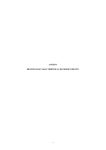
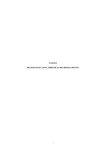
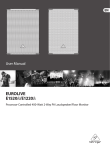
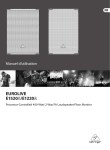
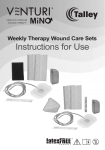


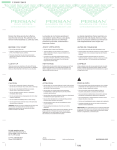
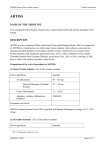
![TEMPLATE No1 [CPMP positive opinion full application]](http://vs1.manualzilla.com/store/data/005681628_1-1a3acb54fcca990dd8c826546eb4788f-150x150.png)
